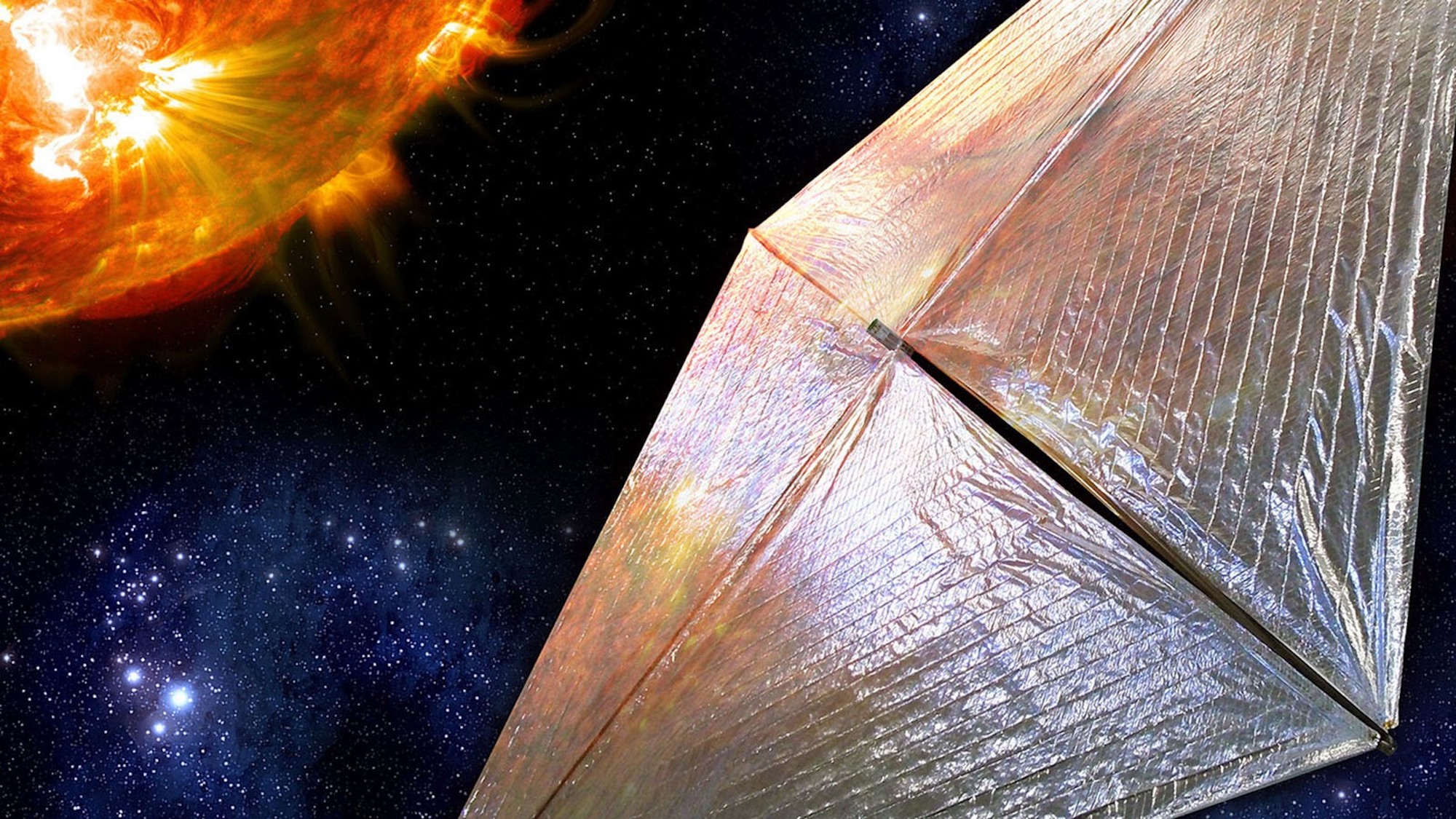

Solar sails that leverage the sun’s photonic rays for “wind” are no longer the stuff of science fiction—in fact, the Planetary Society’s LightSail 2 practical demonstration was deemed a Grand Award Winner for PopSci’s Best of What’s New in 2019. And while countless projects continue to explore what solar sails could hold for the future of space travel, a new study demonstrates just how promising the technology could be for excursions to Earth’s nearest planetary neighbor, and beyond.
According to a paper recently submitted to the journal Acta Astronautica, detailed computer simulations show tiny, incredibly lightweight solar sails made with aerographite could travel to Mars in just 26 days—compare that to conventional rocketry time estimates of between 7-to-9 months. Meanwhile, a journey to the heliopause (the demarcation line for interstellar space where the sun’s magnetic forces cease to influence objects) could take between 4.2 and 5.3 years. For comparison, the Voyager 1 and Voyager 2 space probes took a respective 35 and 41 years to reach the same boundary.
[Related: This novel solar sail could make it easier for NASA to stare into the sun.]
The key to such speedy trips is the 1 kg solar sails’ 720g of aerographite—an ultra-lightweight material with four times less density than most solar sail designs’ Mylar components. The major caveat to these simulations is that they involved an extremely miniscule payload weight, something that will most often not be the case for major interplanetary and interstellar journeys.
“Solar sail propulsion has the potential for rapid delivery of small payloads (sub-kilogram) throughout the solar system,” René Heller, an astrophysicist at the Max Planck Institute for Solar System Research and study co-author, explained to Universe Today earlier this month. “Compared to conventional chemical propulsion, which can bring hundreds of tons of payload to low-Earth orbit and deliver a large fraction of that to the Moon, Mars, and beyond, this sounds ridiculously small. But the key value of solar sail technology is speed.”
Another issue still that still needs addressing is deceleration methods needed upon actually reaching a destination. Although aerocapture—using a planet’s atmosphere to reduce velocity—is a possible option, researchers concede more investigation will be needed to determine the best, most efficient way to actually stop at a solar sail-equipped spacecraft’s intended endpoint. Regardless, the study only adds even more wind in the sails (so to speak) for the impressive interstellar travel method.
